Strawberries, freshly whipped cream and a light, fluffy sponge cake. If ever there was a dessert to eat that celebrates winter fruit but looks and tastes super summery, this is it! A Victoria sponge, named after Queen Victoria, is traditionally made with strawberry jam in the center and a quick, homemade strawberry compote is amazing here. The kind of sponge can vary, I made a Genoise sponge which is dependent on air beaten into eggs, without any added raising agents. It’s pillowy soft and is the perfect base for the cream and berry filling, and topping!
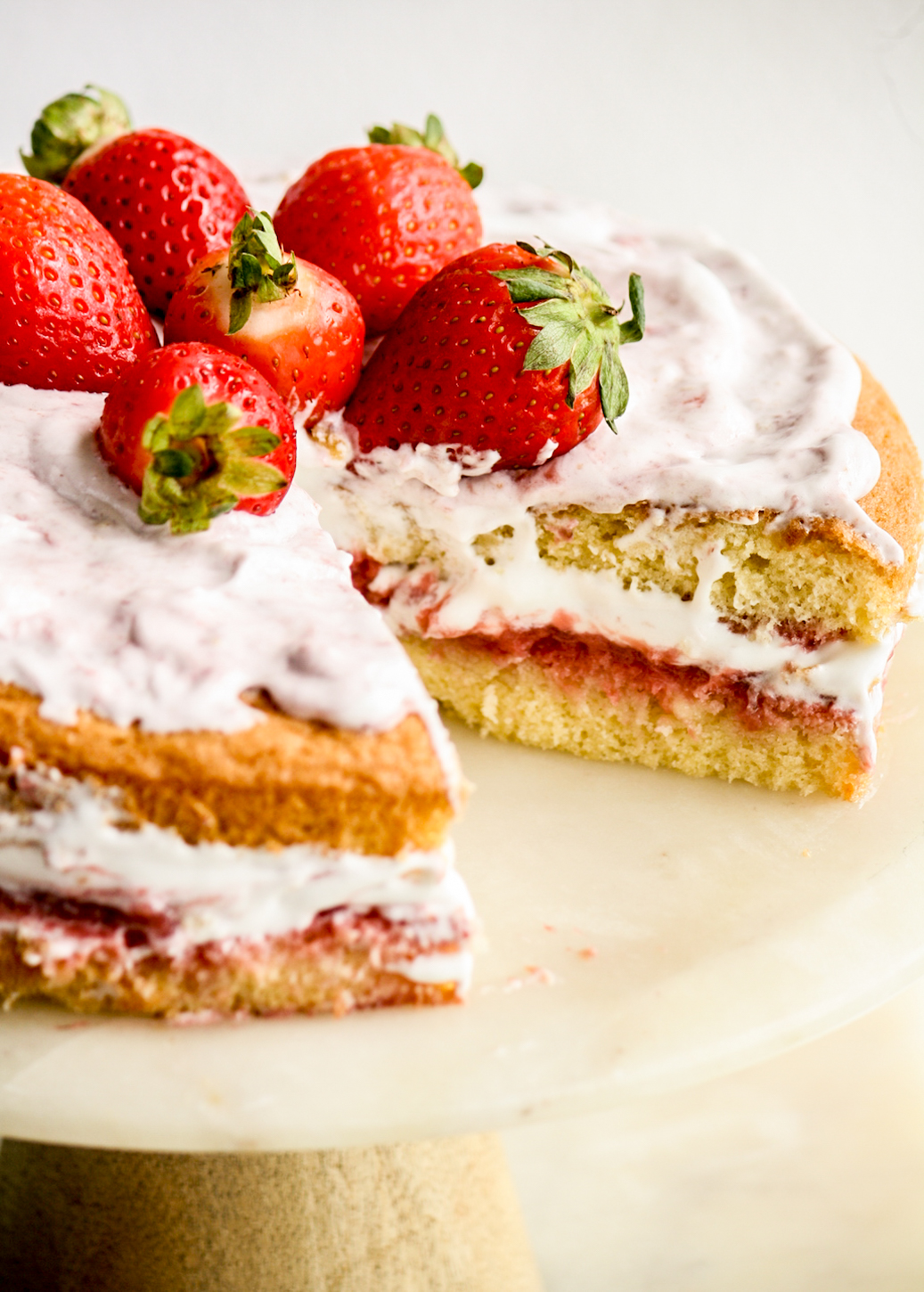 Unlike this strawberry layer cake which is rich and buttery and denser, the sponge here is super airy and light. It requires a little attention to get the texture just right but it’s worth the effort. The recipe below will detail all of it and when done right, this kind of sponge is a joy to eat! I based this on a recipe I found in the Sweet cookbook by Yotam Ottolenghi and Helen Goh. For the compote and cream, I stuck to my usual methods and proportions and it all comes together beautifully.
Unlike this strawberry layer cake which is rich and buttery and denser, the sponge here is super airy and light. It requires a little attention to get the texture just right but it’s worth the effort. The recipe below will detail all of it and when done right, this kind of sponge is a joy to eat! I based this on a recipe I found in the Sweet cookbook by Yotam Ottolenghi and Helen Goh. For the compote and cream, I stuck to my usual methods and proportions and it all comes together beautifully.
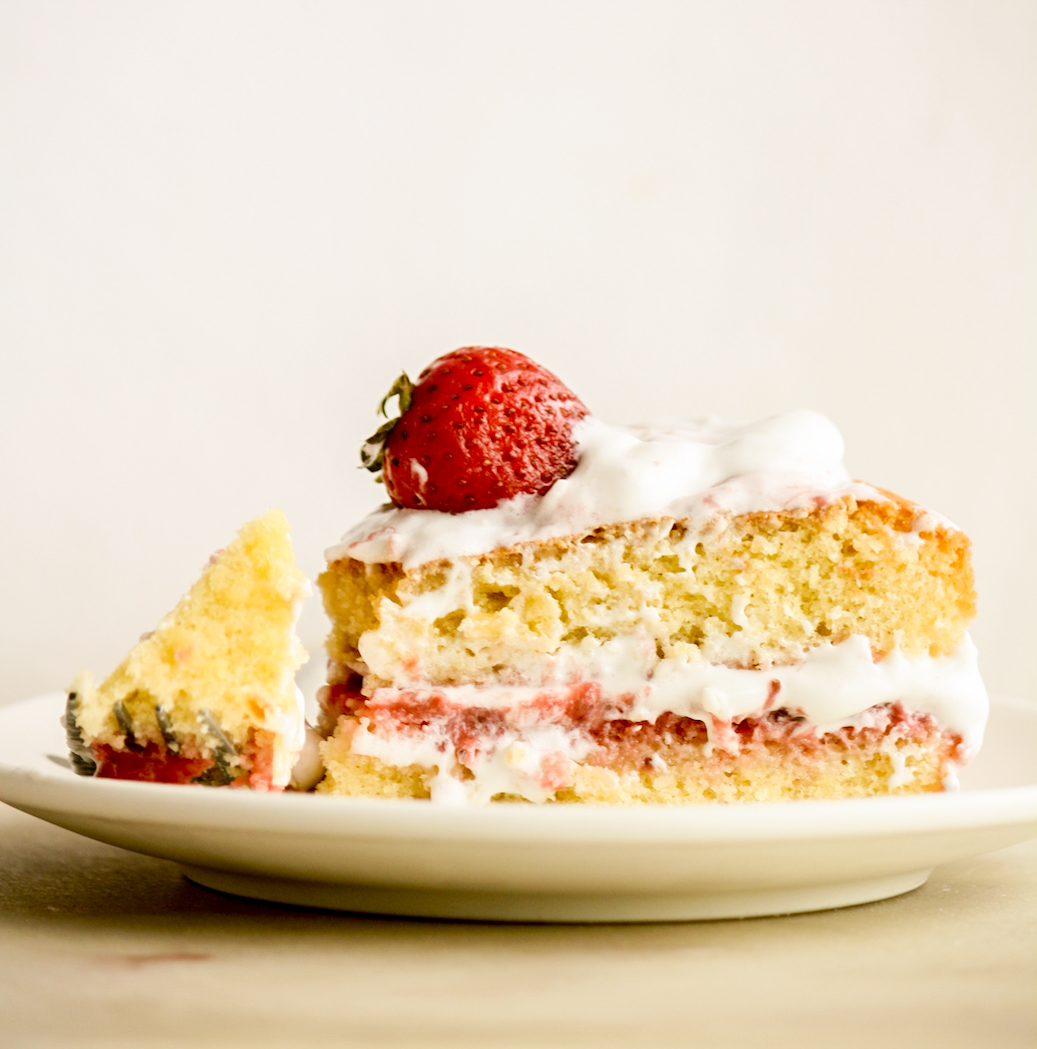
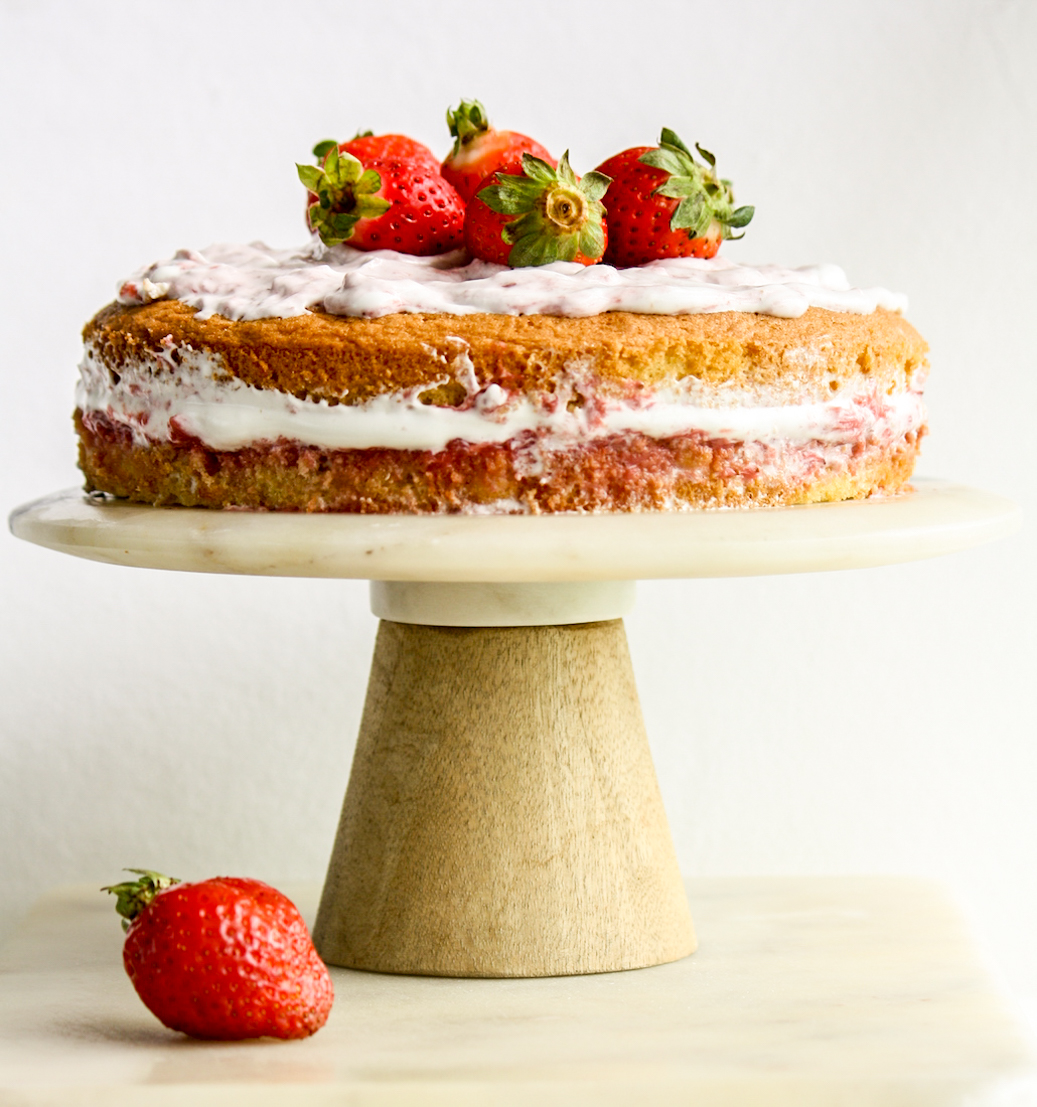
While making the sponge is a little technical and requires precision, it’s not difficult to do at all. A stand mixer helps and having another set of hands working with you helps too, but even without all of that, it’s absolutely doable. Make sure your ingredients are measured at the beginning, that you have an eye on a clock or timer and you’ll be fine. The idea is to beat the batter till just right so the cake rises well in the oven without becoming dense. In the absence of baking powder or soda, the lightness of the cake is entirely about beating those eggs!
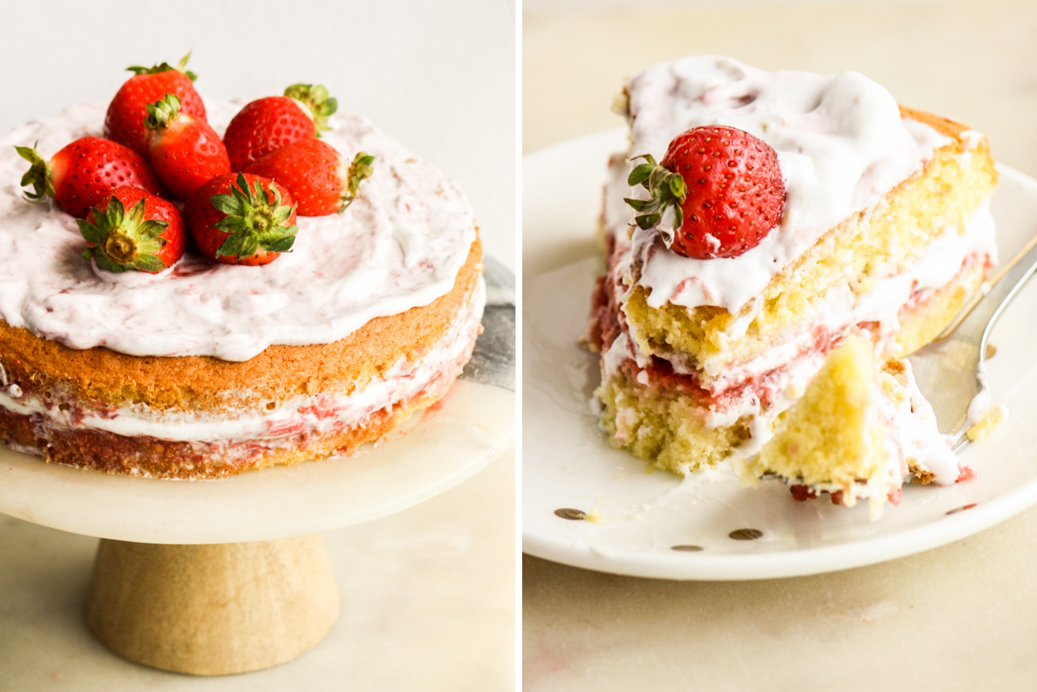
The compote is slightly tart, complementing the sweetness of the cake and the lightly sweetened cream. You can make this as a fully frosted cake, or do it naked-style like I did and add a little of the filling to the top as well. Traditionally, a Victoria Sponge is dusted on top with icing sugar which is absolutely an option too.
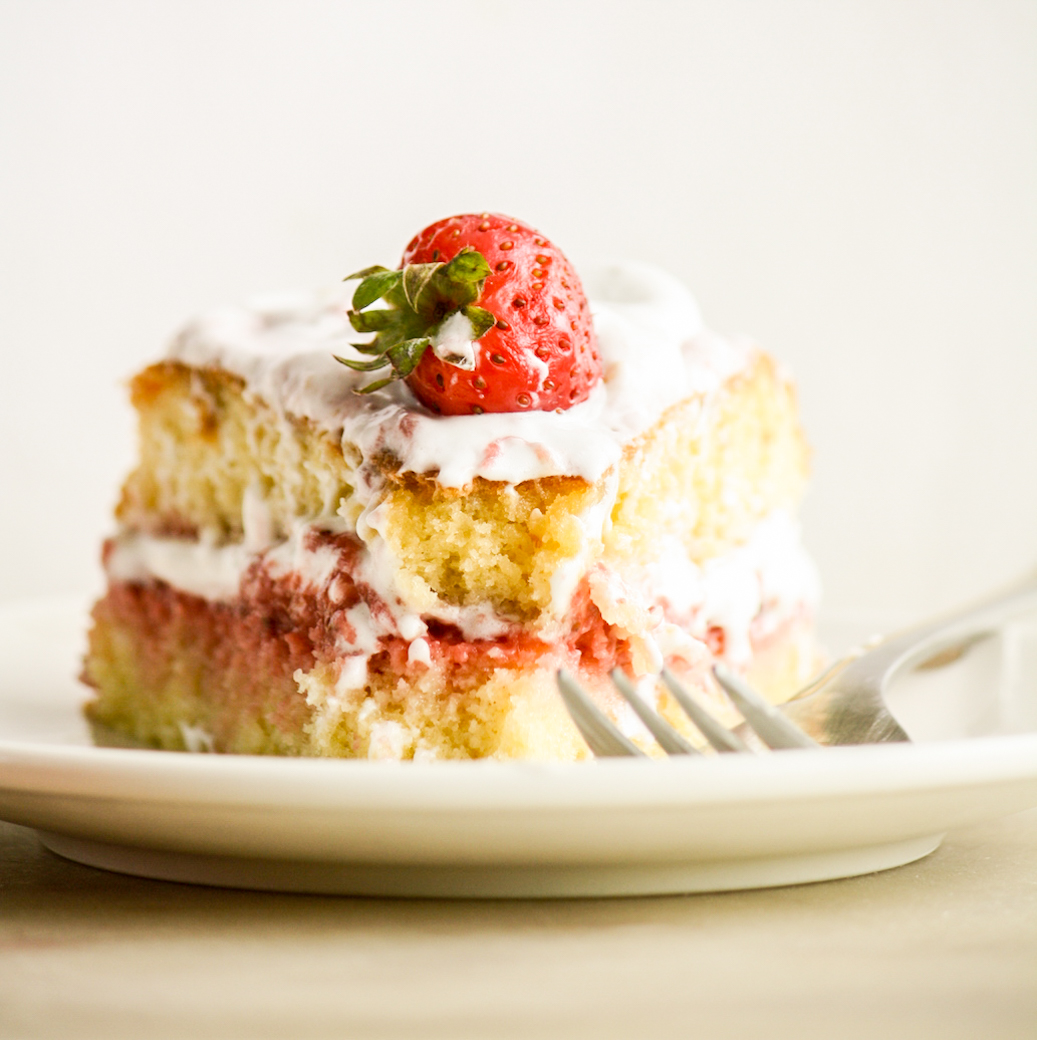
The cake benefits from a long chill in the fridge, it doesn’t firm up or harden because the sponge doesn’t contain much butter so it remains soft and pliable. The chilling helps the cream to set and make it easier to slice so this is a great cake to start one or even two days in advance. I hope you’ll try it!
Please read the recipe notes before beginning.
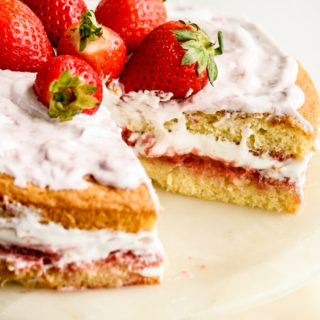
Victoria Sponge
Ingredients
For the Genoise sponge
- 3/4 cup all-purpose flour (100 gms)
- Pinch of salt if using unsalted butter
- 1/4 cup butter (55 gms)
- 4 eggs, at room temperature (integral to this recipe, I can't suggest substitutes
- 1/2 cup caster sugar (100 gms)
- 1 and 1/2 tsps vanilla extract
- Zest of 1 Indian lemon (about 1/2 tsp)
For the strawberries
- 350 gms strawberries (plus extra for decoration)
- 1 tbsp caster sugar
For the whipped cream
- 1/3 cup chilled whipping cream (80 ml) (see notes)
- 1/4 tsp vanilla extract
- 2 tbsps caster sugar
Instructions
- Line the base of an 8 inch springform tin with non-stick baking paper. Do not grease the pan as that prevents the sponge from rising properly. It will be easy to un-mould once it's baked, don't worry. I don't recommend a regular round cake tin for this recipe, it'll be much harder to remove the cake.
- Preheat the oven to 170 C. Make sure all your ingredients for the sponge are measured and kept ready.
- Sift the flour (and salt, if using) three times and set aside. This extra sifting aerates the flour and helps create a lighter sponge. Melt the butter and set it aside to cool.
- Now add a little water to a saucepan and bring it to a simmer over medium heat. While this is happening, combine the eggs, sugar, vanilla and lemon zest in a mixing bowl that fits neatly over the saucepan, without its base touching the water. Bring the heat down to low and place the bowl over the saucepan. Using a balloon whisk, whisk continuously for 5 to 7 minutes until the mixture is slightly warm, frothy and paler (see photos below). This double boiler step warms the eggs gently, creating more air and also helps dissolve the sugar so they beat better and become fluffy easily.
- Pour this warm mixture into the bowl of a stand mixer fitted with the whisk attachment. Beat on high speed for about 5 minutes until the mixture has tripled in volume, thickened and leaves ribbons when you lift the whisk up (see photos below). I found the stand mixer bowl too large for a double boiler which is why I transfer the mixture after the above step, but if yours fits easily, you can just use the same bowl for both. You can also do this step with a hand mixer as long as your bowl is large and deep enough to hold the mixture as it increases in volume.
- Now gently add half of the sifted flour to the bowl and fold it in using a silicone spatula. Do not mix vigorously, gently take your spatula to the bottom of the bowl, bring it up cutting through the airy batter and repeat. Add the remaining flour and do the same. While the batter will naturally deflate a little, don't worry about fully incorporating the flour as you fold. If a few streaks of it are visible, that's ok.
- Slowly drizzle in the melted butter and once again fold gently but quickly to combine so that the butter doesn't settle at the bottom. Make sure your spatula goes right to the base of the bowl to get it all folded in.
- Immediately pour the batter into the prepared pan and bake for 25 to 30 minutes until browned on top and when you press the surface lightly, it should spring back. A little over-mixing could cause the top to dome slightly and then fall as the cake cools. If this happens, don't worry, the texture of the cake isn't affected.
- Let the cake cool completely in the pan at room temperature. Once cooled, you can cover it and leave it out overnight as well.
- To make the filling, rinse the strawberries, then cut off the stems and chop them into pieces (not too small, a little texture in the compote is nice). Add them to a saucepan with the sugar and place the mixture on low heat. The sugar will melt, the juices will release and the compote will bubble and darken, thickening slowly as the berries break down and become jammy. This takes about 7 to 10 minutes, depending on the berries. Let the compote cool at room temperature to thicken further, or you can place it in the fridge to speed things up.
- Finally, whip the cream, vanilla and sugar together with a hand mixer on high speed until fairly stiff peaks forms, 3 to 4 minutes. Place in the fridge until ready to use.
- When ready to assemble the Victoria sponge, run a sharp knife around the edges and remove the sides of the cake pan. Use the paper to lift the cake, flip it gently and peel off the paper. Slice the cake carefully into two layers with a long sharp knife. Place the bottom half on a platter or cake stand.
- Spread all the compote on this half, followed by the whipped cream. Place the top half on it and the excess will ooze out of the sides. You can either use it to coat the sides, or do what I did and scoop it up and spread it on the top for a little additional flavour on the surface. Alternately, you can make lesser of the compote and cream if you prefer to just dust the top with icing sugar and leave the sides plain as is traditional.
- Place the cake in the fridge for an hour to let the cream firm up and for the sponge to absorb some of the moisture so the layers stick and the cake is easier to slice. When ready to serve, decorate the top with strawberries and use a sharp knife to cut the cake. A little cream might still ooze out, it's ok, it's messy in the best way!
- Store the cake in the fridge at all times, for 3 to 4 days at the most. Happy baking!
Notes
Shop this recipe!
This post contains affiliate links.

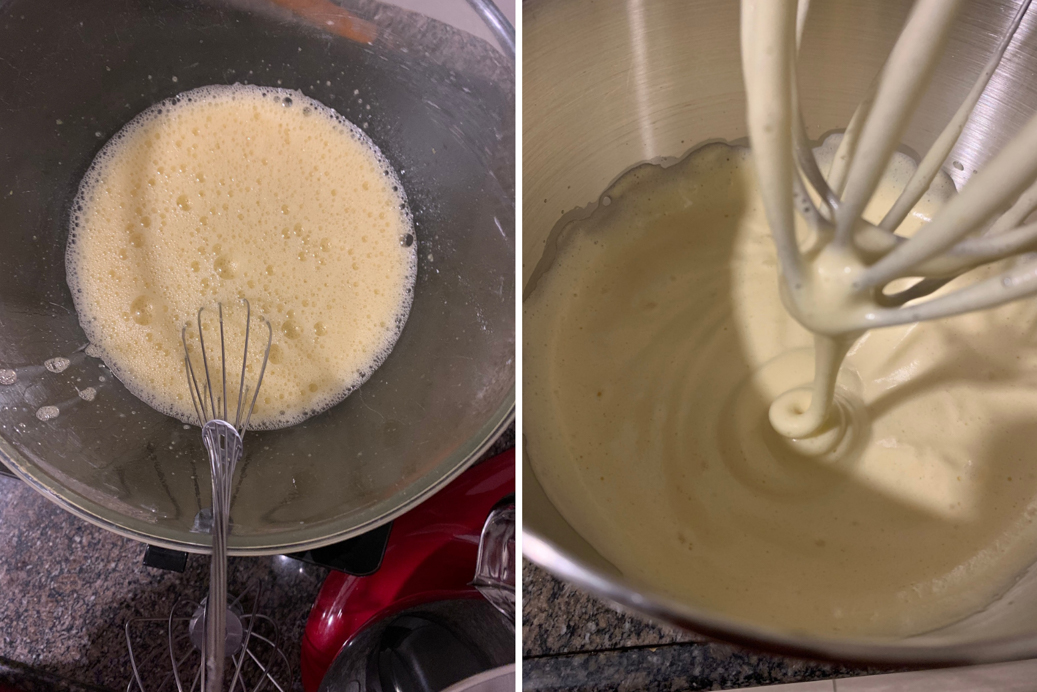
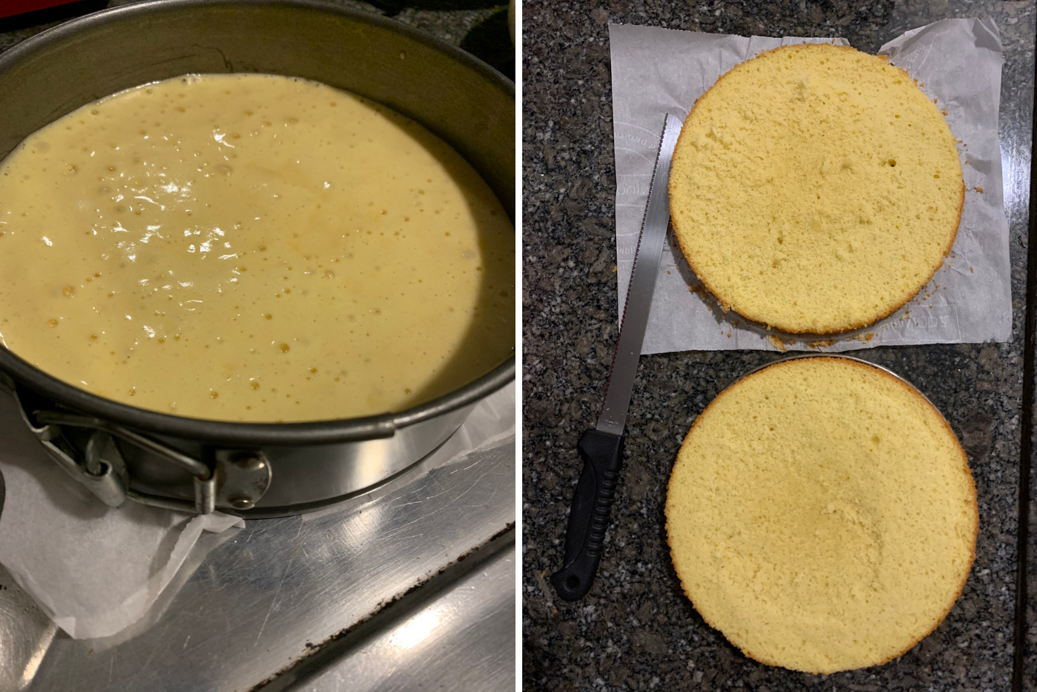

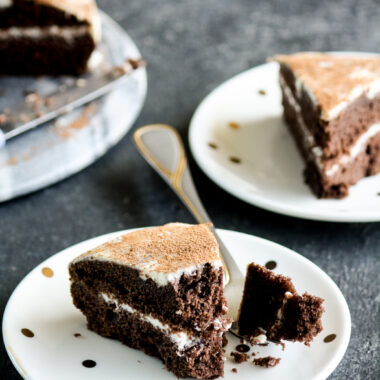
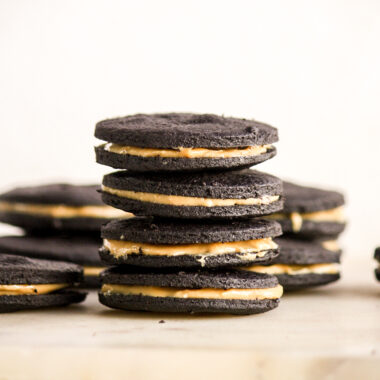
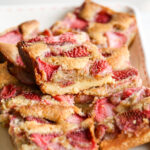


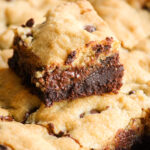
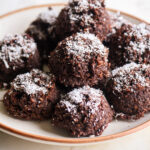

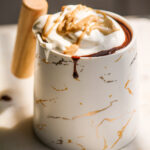

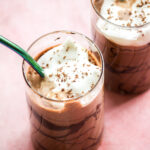
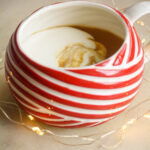

Pingback: Strawberry Tres Leches Cake
Pingback: Mango Coconut Sponge Cake
Pingback: Mango Coconut Tres Leches Cake
Pingback: Black Forest Cake
Pingback: Coffee Tres Leches Cake